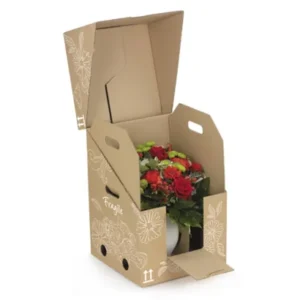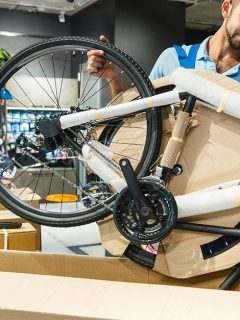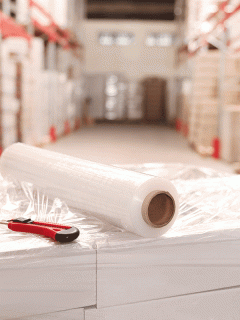Everyone knows it: the classic document envelope (which is charmingly called “Huckepacktasche” in Austria…). Affixed to all kinds of shipments, it immediately draws attention to important transport documents. But why is it so awkward? Why not just put it in the parcel with the papers?
Export to non-EU countries: Document pouch with repeater fastener
When shipping to non-EU countries, accompanying documents must be attached to the consignment in such a way that they can be viewed by customs and other authorities. Of course, it’s an advantage if you don’t have to open the parcel itself. With the help of document pouches, you have access to these papers – and can then attach them securely to the parcel again thanks to the repeat fastener.
And within the EU?
Of course, these papers can also be enclosed with the consignment itself when sending within Germany or within the EU. For shipments within the EU, the recipient first opens the accompanying paper or document bag. However, the risk of important documents being overlooked and disposed of together with filling and padding material is not small.
For this reason, it is a good idea to send the really important documents separately in a document bag when sending within the EU. There they are clearly visible and well protected against damage, manipulation, loss and weather.
Shipping within the EU:
Only the recipient opens the document pouch. Therefore, a document pouch with an adhesive seal is sufficient.
Shipping for export outside the EU:
Shipping documents such as packing lists must be visible. Document pouches with a resealable closure, the so-called repeating closure, are recommended here.
How is a document pouch constructed?
The practical bag is available in a wide range of formats and designs.
You can easily find the right size in our webshop using the filter function.
- Transparent or opaque
- resealable or for one-time opening
- printed with standard imprint, with individual imprint or without imprint
- with narrow edge or with wide edge, which is ideal for additional stapling to, for example, wooden crates
- Made from extremely resistant PE film, film with a high recycled content or even 100% paper
- In various film thicknesses – and qualities
- Available in the standard sizes DIN C6 (114 x 162 mm), DIN long (110 x 220 mm), DIN C5 (162 x 229 mm) and DIN C4 (229 x 324 mm) .
Delivery note bags: Design and production
However, the “structure” of such a document pouch is usually the same: siliconised paper, adhesive, bottom and top film.
But how is this all-round talent actually produced? During a tour of the production halls of one of our suppliers, the Debatin company, we were able to investigate this question…
At the beginning there is a large roll of silicone paper (100% FSC certified). This is unrolled at high speed and runs through a machine in which 180°C hot glue is applied. In the next step, the bottom film of the document pocket is bonded to the paper. Now a second film made of polyethylene with a certain amount of recycled material is added. Debatin has found the ideal balance for this: Although the recycled material means that the film is no longer highly transparent, it does save some CO2. The documents inside are still very easy to read with high CO2 savings.
The two films are welded together. Finally, the cover strip is applied, which is located at the upper end of the document pocket . The machine now cuts the unprinted document pockets into strips of four document pockets next to each other. These are separated from each other by hand in order to be able to carry out the best possible quality control. The employees therefore test the processing of the finished products right at the packaging stage.
Unprinted or striking red?
The advantage of this unprinted document pouch: a label from shipping service providers can be inserted and recognised by the scanner device, which is not possible with the document pouches with red print.
However, the printed document pouches are often seen: The “classic” red document pouch is printed in several languages and can therefore be used for international shipments without any problems.
How to get the colour on the accompanying paper bag
In the production process, the print is stamped on before it is cut. For the document envelope, which is very popular in Germany, for example, the red background is stamped on first, leaving only a transparent area for the address window. Once the first layer of ink has been applied, it is blown on with heat. The solvent evaporates and the ink dries. Now the red document pocket runs over a second ink roller, which stamps on a black lettering such as “LIEFERSCHEIN – RECHNUNG”. In order to apply the ink optimally to the pocket, the surface to be printed is roughened beforehand. This ensures that nothing smears, even with multi-coloured printing.
This is important to us: Debatin uses recycled films
Together with selected partner companies, our supplier works on a recycling cycle when using films. To facilitate recycling, Debatin largely does without film laminates and mixed films and almost exclusively uses films with recycled content in the production of document pouches. In the process, film materials that have already been used are increasingly reused and form the basis for the creation of new, innovative and sustainable products. After their use, they can become part of the recycling cycle again. An important measure to conserve resources and the environment. You can find out more about the sustainability offensive for document pouches on our partner’s homepage.

















